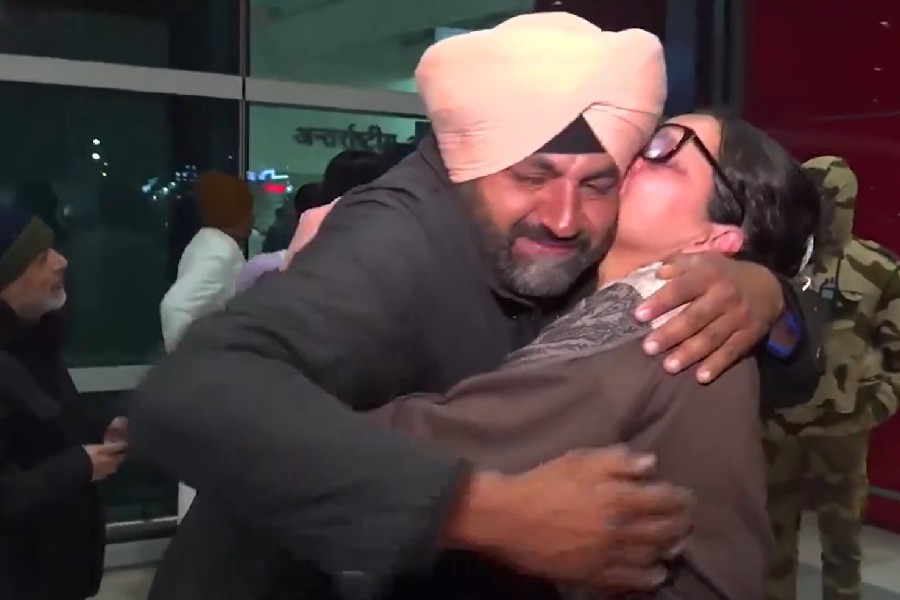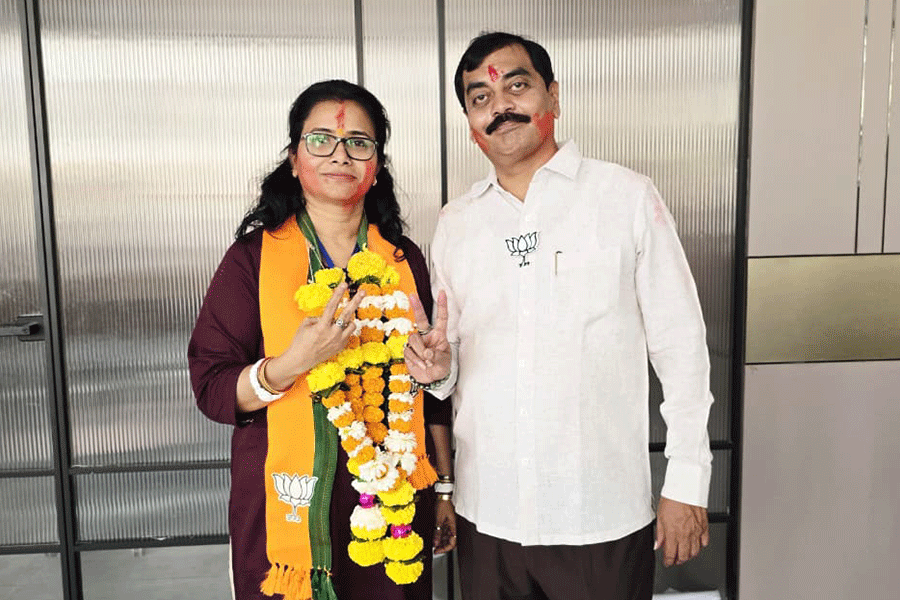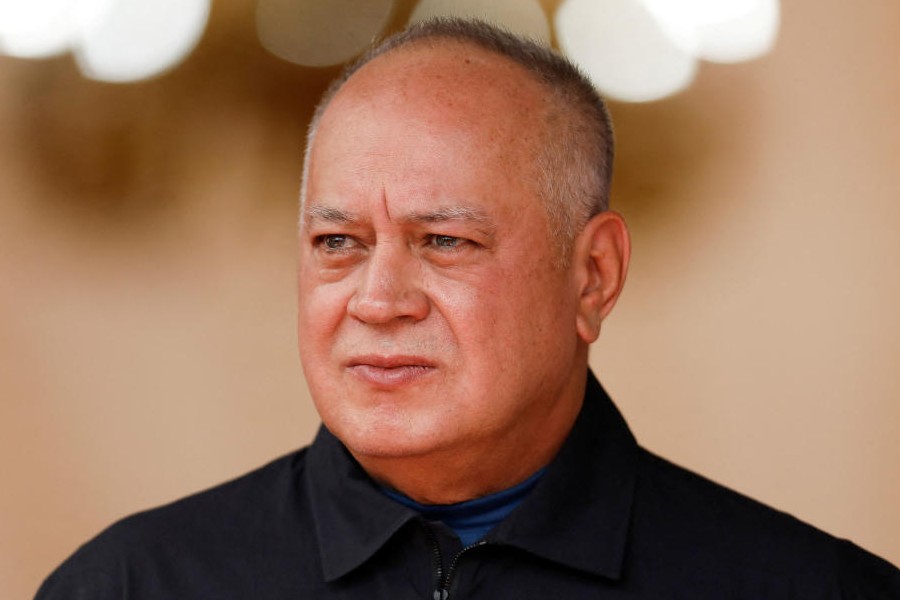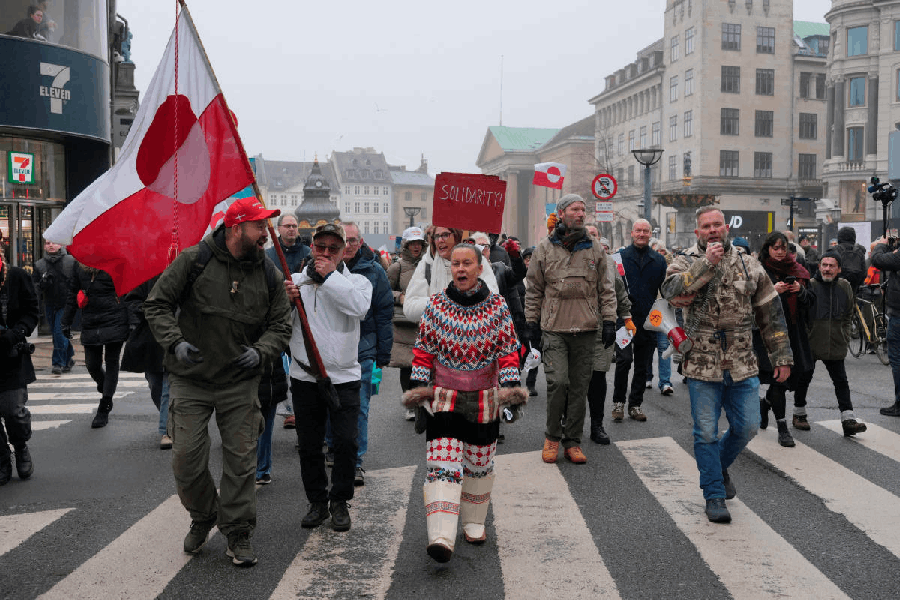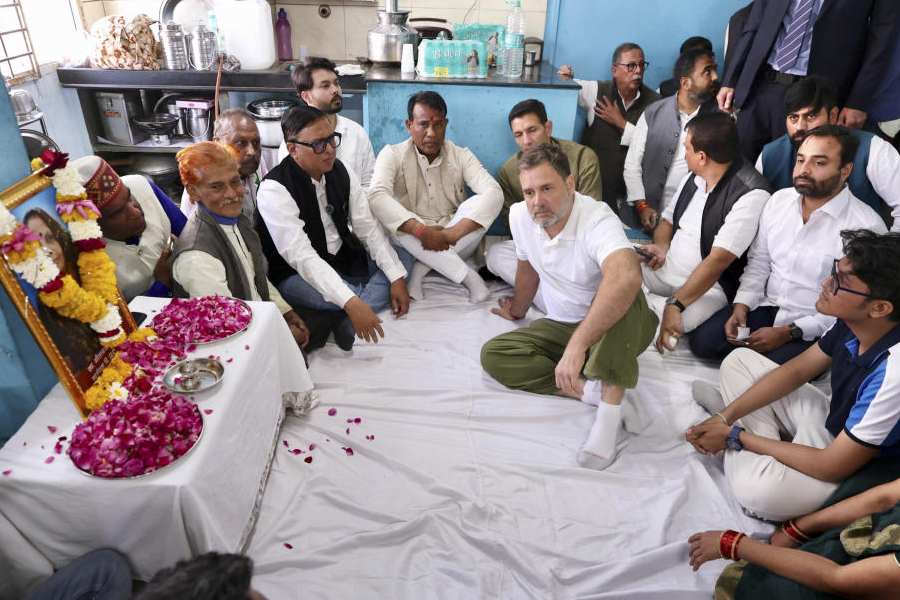 |
| Prabuddha, Aniruddha, Avik, Madhuja and Arghya Kamal at The Bridge on Saturday. Picture by Aranya Sen. |
Director-cinematographer Avik Mukhopadhyay, producer Aniruddha Roy Chowdhury (maker of Antaheen), editor Arghya Kamal Mitra, scriptwriter Madhuja Mukherjee and music director Prabuddha Banerjee discuss and dissect Ekti Tarar Khonje with Reshmi Sengupta at The Bridge...
How did the idea of a filmmaker backing another filmmaker’s work take shape?
Aniruddha: Avik and I had started our careers together in advertising and we have worked as a team.... For me, it’s the person that matters more than the script. Avik, Arghya, Prabuddha and I have known each other for a long time and I believe one can do great things with trust and teamwork.... I had proposed to Avik that he make a film back in 2008. We were at the airport, talking, and we were busy with ads back then. Finally it happened.... Ekti Tarar Khonje has turned out to be an entertaining film with lots of commercial elements... comedy, romance, thrill. I love this film.
Prabuddha: There was no pressure on us from the producer, though he was concerned.
Madhuja: And even if Tony (Aniruddha) had doubts about certain scenes, he never made an issue.
Aniruddha: We have discussed the scenes where I had doubts but I didn’t want to barge in because for me mutual trust is very important. I stopped going to the sets after the first few days and I also didn’t listen to the music though I love being a part of the music-making process.
Ekti Tarar Khonje is a thriller. How did the storyline develop?
Avik: I had the story idea which I shared with Madhuja and then she developed the storyline. The basic outline had a small-town boy who comes to the city to become an actor and then faces various problems. For him, it is the problem of survival in a big city. Also, he has a certain special power and things start getting complicated from then on.
Madhuja: As I wrote, the plot thickened with characters, situations and locations. There are several quirky characters in this film, who may not have any direct link with the plot but add to the narrative. I have consciously created characters who talk and behave very differently from each other.
The hero gets involved with the city’s underworld. Is it a real slice of Calcutta?
Avik: Well, in Bombay the underworld is in your face but in Calcutta it’s subtle. There, people involved with the underworld live in a particular area of the city but here it could be your neighbour’s house.
Madhuja: The underworld, rather the city’s underbelly, appears very charming to Shayan because of the characters he meets.
Avik: Many Bengali commercial films have the underworld but I was never convinced about the way they look in these films. The way I shot it, Ekti Tarar Khonje has become a very different looking film. I have never shot a film like this before, and I have done nearly 40 films. The look evolved along with the story.
Why did you shoot the film on a Red camera?
Avik: The Red camera is new here, but it’s been out there globally for quite some time. I was inspired by Steven Soderbergh’s Che, which was shot on Red camera. Also, Martin Scorsese’s Shutter Island. The Red camera had two advantages. First, I could shoot more material and give my editor some extra shots to use. Second, I can do the post-production in Calcutta and not run to Bombay.
Aniruddha: But it doesn’t mean that Red has been a cheaper option for us. The end product has made all the difference, though. I can vouch that you haven’t seen such a texture and look in Bengali films, ever.
 |
| Shayan and Arpita in the film |
Was chopping material for a thriller easy or tough?
Arghya: When the material comes to me, I am inspired by the script and the film’s look. In this case, the material actually asked me to deliver a lot. I was inspired by everything... the look, the performances, the production design, the production values. I am very comfortable editing Avik’s photographed material. It not only looks good, it lets you think and edit. I had heard the idea and then the script but the material surpassed my expectations.
Avik: I feel an editor should be detached from the product because he can make a lot of difference. Argha doesn’t go to the floors to see the shoot.
Arghya: The film has all the elements of a thriller on urban survival. It’s racy but it’s not a roller-coaster ride.
Prabuddha: The way Arghya edited the film facilitated the background music. It helped me choose the instruments, the tone, the pitch.
What was Avik’s brief for the film’s music?
Prabuddha: Avik didn’t have any specific brief for me. He only told me to “respect silence”. The protagonist in this film leads a dual life and expressing that duality was very interesting for me. So, the music grew along with the characters. We decided that the songs should have a background quality and should blend in, which it does. We have used Armenian instruments, rock and distortion guitar, esraj for a certain character and Greek percussion.
Avik: The music is not a filler here. Sometimes in films, the story stops when there are songs and then resumes when the music stops. We have tried to avoid that.
Prabuddha: We didn’t want to experiment with Rabindrasangeet but obviously the orchestration was done keeping the visual in mind.
Aniruddha: The background music is a character in the film.
Was the dual responsibility of direction and cinematography a burden?
Avik: No, I never felt these were two separate departments as I have integrated both. For instance, the moment I choose a lens, I am also taking a directorial decision. This does not hamper the shooting. Besides, I have a camera crew that knows how I work, so that makes things a lot easier for me.


